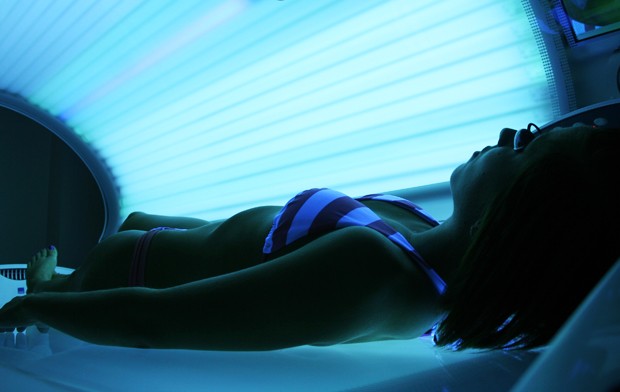New research from the University of Minnesota has strengthened the link between indoor tanning and the risk of developing melanoma. Using any type of tanning bed for any period of time may increase the likelihood of developing melanoma âÄî the most deadly form of skin cancer âÄî by 74 percent, the study said. The study showed that frequent patrons of indoor tanning salons were 2.5 to three times more likely to develop melanoma than those who have never used indoor tanning beds. The study defined frequent users as those who spent at least 50 hours, 10 years, or more than 100 sessions using a tanning bed. The melanoma incidence rate has more than doubled in the United States since 1973, according to the American Cancer Society. ACS estimated that 68,720 new cases of melanoma were diagnosed in 2009. âÄúWhat is remarkable about our results is that they are very consistent,âÄù said DeAnn Lazovich, an associate professor of epidemiology at the University and the principal investigator of the study. The study examined more than 2,200 Minnesotans âÄî roughly half of whom had been diagnosed with melanoma âÄî and gathered information on their tanning habits and compared that data with the cancer-free control group. The results fly in the face of past studies, which showed that using tanning beds increased the likelihood of developing melanoma by just 15 percent. While previous studies suggested that the age of an individual is an important risk factor, LazovichâÄôs study indicated that frequency of use is the biggest determinant. Those who begin using tanning beds at a young age are likely to use them more frequently, she said. In addition, the results also showed that âÄúthere was no safe tanning device.âÄù Use of any type of indoor tanning device resulted in an increased risk of developing melanoma. As a dermatologist in rural Willmar, Minn., and an adjunct professor of dermatology at the University, Dr. Cindy Firkins-Smith has dealt with melanoma firsthand. She was not surprised by the findings of the research, she said. âÄúIt reinforces what I have seen clinically for 20 years,âÄù she said. Firkins-Smith said the number of her patients with melanoma has âÄúincreased astronomicallyâÄù during her two decades in practice. She specifically noted a sharp increase in young women with the disease. âÄúItâÄôs not at all unusual to see women in their 20s with melanoma,âÄù she said. She traces the overall increase to the arrival of tanning beds in the United States, which came into vogue in the early âÄô80s, she said. The tanning industry criticized the findings. LazovichâÄôs research was well-conducted but the conclusions are stretched, said John Overstreet, spokesman for the Indoor Tanning Association. âÄúThe science is all over the place on this, and there are lots of different opinions,âÄù he said. âÄúI think the jury will be out for a long time.âÄù Overstreet said the predominately Caucasian population of Minnesota may have led to artificially stronger results. People with lighter skin are more susceptible to melanoma. âÄúI think what the study really shows is that there are certain groups of people that need to be more conscious of the fact that they are more at risk,âÄù he said. A culture of tanning University journalism major Gwen Hutchens has spent 12 minutes per week in the tanning bed in her apartment building for the past year. The free tanning bed is convenient, and it helps to âÄúget some color,âÄù she said. When told the results of LazovichâÄôs study, Hutchens had just two words: âÄúOh wow.âÄù âÄúWhen someone refreshes my memory on how bad it is for you, IâÄôm less likely to go,âÄù she added later. Hutchens said she will keep the research in the back of her mind to consider before she tans again. That is LazovichâÄôs next step: using the research to make an impact on policy and social norms. Included in her new grant under review at the National Institutes of Health are numerous testing strategies to reduce teenage girlsâÄô use of indoor tanning. But the key to curbing tanning bed use may be more complicated than circulating information pamphlets. âÄúWe do need to change the perception that having a tan skin makes you look more attractive,âÄù she said. âÄúA tan skin is a damaged skin.âÄù

Image by Joe Michaud-Scorza, Daily File Photo
Tanning beds riskier than thought, U study shows
New research from the University of Minnesota has strengthened the link between indoor tanning and the risk of developing melanoma.
by Kyle Potter
Published June 2, 2010
0

